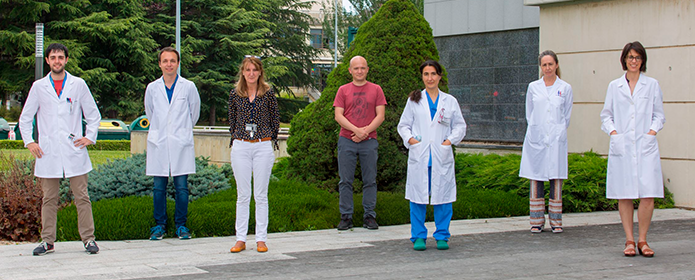Increased protein predicts increased risk of amputation in patients with peripheral artery disease
Researchers from Cima University of Navarra, Navarra Hospital Complex and Navarrabiomed present calprotectin as a marker of disease progression.

Peripheral arterial disease (PAD) is a pathology with a high prevalence in our environment. It is associated with a high risk of suffering different cardiovascular events, such as myocardial infarction, stroke or ischemia (lack of blood supply) in the lower extremities, which implies a poor quality of life for the patient and a high socioeconomic cost for the healthcare system. In addition, in severe cases it can lead to the death of the patient.
Researchers at Cima University of Navarra, Navarra Hospital Complex and Navarrabiomed have identified a protein that predicts the risk of limb amputation in these patients. Its early detection will help to implement treatments that slow the progression of the disease.
The work, carried out at the framework of the high school of research Sanitaria de Navarra (IdiSNA), focused on the blood analysis of 100 healthy people and 310 patients with minor and more severe forms of PAD. "Specifically, we have studied the content of extracellular vesicles in the blood, lipid spheres that are released by all the cells in our body. These vesicles increase in pathological states and carry nucleic acids and proteins from the cells of origin," explains Dr. Carmen Roncal, researcher in the Cardiovascular Diseases Program at Cima, member of the CIBERCV and co-director of work.
Omics" technologyThanks to the development of "omics" technologies, researchers at Cima developed a procedure to analyze the nucleic acids present in extracellular vesicles. "We applied next-generation sequencing (NGS) techniques, which allowed us to study the messenger ribonucleic acid (RNA) contained in the extracellular vesicles. This is the genetic material that encodes the sequences of the proteins to be released into the organism."
After applying a bioinformatics analysis, carried out by Dr. David Gómez-Cabrero 's group at Navarrabiomed's Translational Bioinformatics Unit, the researchers identified 15 genes differentially expressed in extracellular vesicles. "When correlated with the clinical picture of the patients, we confirmed that patients with critical ischemia have elevated levels of calprotectin. In addition, this molecule is associated with a higher probability of amputation, which in turn increases the risk of mortality," says the researcher at Cima. The results have been published in the Journal of Extracellular Vesicles.
The researchers suggest that extracellular vesicles are a source to find new biomarkers in peripheral arterial disease. "At the experimental level their content provides a lot of information about the cells of origin and how they relate to other cells. The technological development will make it easier for this analysis to be routinely implemented in clinical activity in the future," concludes Dr. Roncal.
-
reference letter bibliography:
J Extracell Vesicles . 2020 Feb 19;9(1):1729646.
